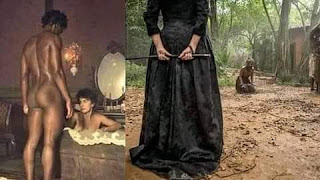Why are Greek statues always NAKED? The extraordinary answer's laid bare in magnificent - if risque - exhibition at the British Museum
Why are Greek statues always NAKED? The extraordinary answer's laid bare in magnificent - if risque - exhibition at the British Museum
Democracy was born in Athens, the first great tragedies and comedies were written — and statues were carved that were more astonishingly lifelike than ever before.
What’s even more incredible is that many of those statues were naked. Walk around the dazzling new blockbuster show at the British Museum — already being hailed by critics as ‘the absolutely must-see exhibition of the year’ — and there’s barely a scrap of clothing to be seen.
Democracy was born in Athens, the first great tragedies and comedies were written — and statues were carved that were more astonishingly lifelike than ever before.
What’s even more incredible is that many of those statues were naked. Walk around the dazzling new blockbuster show at the British Museum — already being hailed by critics as ‘the absolutely must-see exhibition of the year’ — and there’s barely a scrap of clothing to be seen.
Greek nudity is a sign not of humiliation, but of moral virtue among the social elite of male citizens,’ says Neil MacGregor, director of the British Museum.
‘When a youth removes his clothes to compete in the ancient Olympic Games, he does not merely stand naked before his peers, rather he has put on the uniform of the righteousness.’
It’s not as if the Greeks were naked the whole time, such as when they were doing the shopping or eating a meal. But they were naked in the gym; in fact, the word ‘gymnasium’ comes from the Greek ‘gymnos’, meaning ‘naked’.
A 530 BC Athenian vase shows four athletes — a long-jumper, two javelin-throwers and a discus-thrower, all of them naked.
Indeed, perhaps the most famous Greek sculpture of all, also in the show, is the Discobolos — the discus-thrower.
He is a study in composed balance, with the discus in one outstretched hand, the other bent in counterbalance down towards his knee. He is also completely naked.
All the athletes covered themselves not with garments but olive oil mixed with dust; an early sort of suntan lotion to protect themselves from the blazing Mediterreanean sun in their outdoor gyms.
A 300 BC bronze statue shows a young athlete wiping off the oil with a strigil, or scraper.
Quack doctors scooped up this gloop — ‘paidikos gloios’, or ‘boy oil’ — and prescribed it for illnesses and ageing skin. Enter the first moisturiser.
Experts still aren’t sure why athletes competed at the original Olympics in the nude.
Greek nudity is a sign not of humiliation, but of moral virtue among the social elite of male citizens,’ says Neil MacGregor, director of the British Museum.
‘When a youth removes his clothes to compete in the ancient Olympic Games, he does not merely stand naked before his peers, rather he has put on the uniform of the righteousness.’
It’s not as if the Greeks were naked the whole time, such as when they were doing the shopping or eating a meal. But they were naked in the gym; in fact, the word ‘gymnasium’ comes from the Greek ‘gymnos’, meaning ‘naked’.
A 530 BC Athenian vase shows four athletes — a long-jumper, two javelin-throwers and a discus-thrower, all of them naked.
Indeed, perhaps the most famous Greek sculpture of all, also in the show, is the Discobolos — the discus-thrower.
He is a study in composed balance, with the discus in one outstretched hand, the other bent in counterbalance down towards his knee. He is also completely naked.
All the athletes covered themselves not with garments but olive oil mixed with dust; an early sort of suntan lotion to protect themselves from the blazing Mediterreanean sun in their outdoor gyms.
A 300 BC bronze statue shows a young athlete wiping off the oil with a strigil, or scraper.
Quack doctors scooped up this gloop — ‘paidikos gloios’, or ‘boy oil’ — and prescribed it for illnesses and ageing skin. Enter the first moisturiser.
Experts still aren’t sure why athletes competed at the original Olympics in the nude.
Some suggest it dates from an early event, when an athlete won the 200m after he’d lost his trunks, and his rivals promptly copied him.
Another theory proposes that the nakedness reflected an ancient ritual to mark the reaching of adulthood, when you took off your child’s cloak — a shorter gown worn by juveniles — at the age of 20, and ran naked to join the grown-up citizens.
In Athens, there was also an annual naked celebration in honour of Athena, the city’s patron goddess. Nude young Athenian men ran from a gymnasium on the edge of the city all the way to the Parthenon.
The fatter and slower men were slapped by the watching crowd as they stumbled past.
Whatever the origin of the naked fashion, passions ran high in the gyms, where older men often lusted after the athletic bodies of younger men in an age when homosexual sex was common.
What’s more, the gyms were frequently decorated with nude statues of Eros, the winged boy-god of desire. One appears in the British Museum show.







Comments
Post a Comment